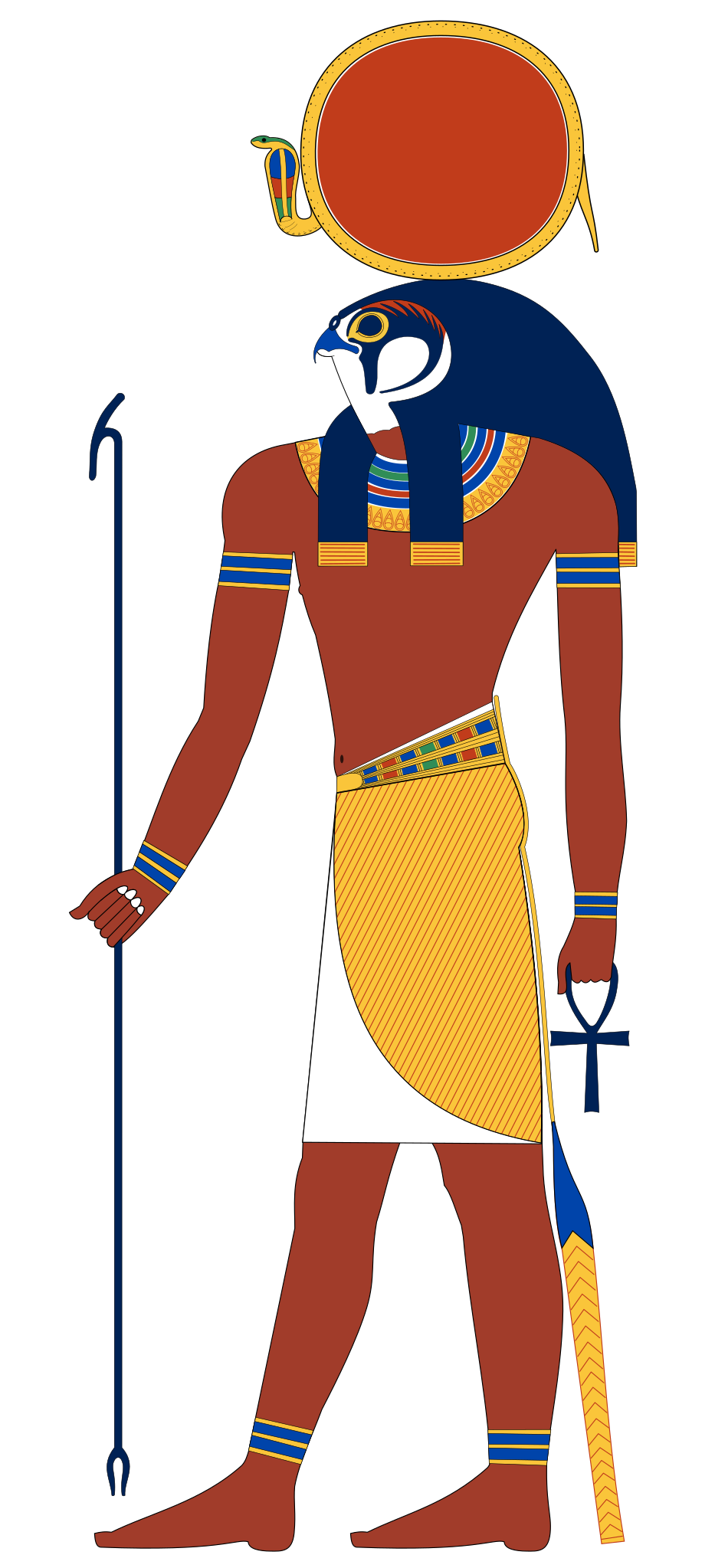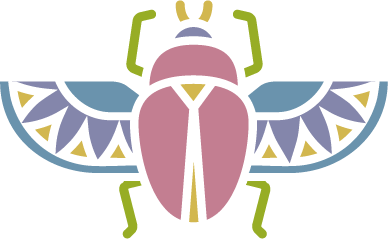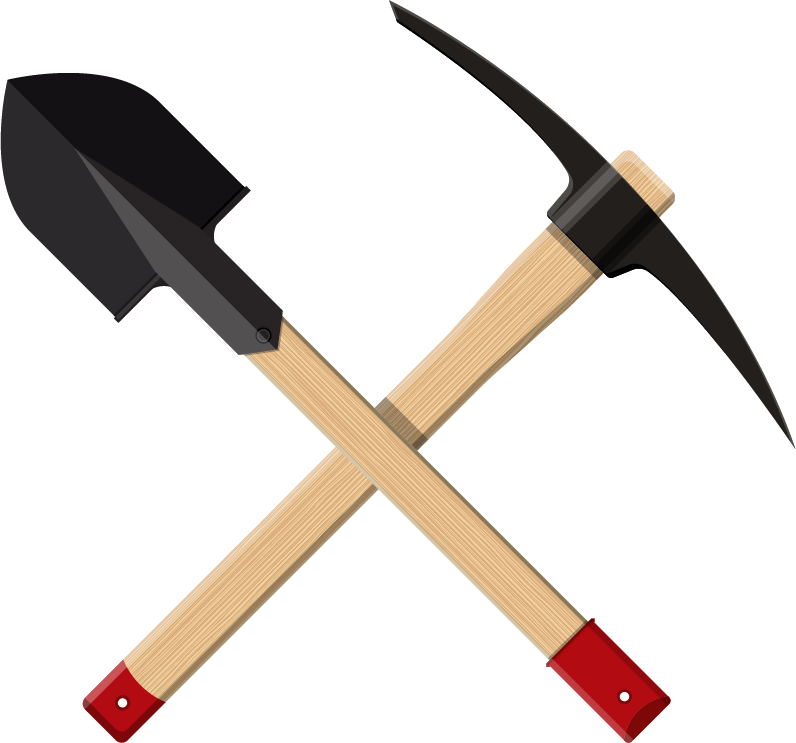Egypt: Archeology, Egyptologists, Hieroglyphics and Gods: Part 1
Ra Created Himself Out of Chaos and Then Created Everything Else
Below: The Gods Ra and Osiris, Celebrating the Egyptologists and Learning About Ancient Egyptian Symbols
 Ra: God of the Sun
Ra: God of the Sun
Ra is one of the most important deities in ancient Egyptian mythology and is considered the god of the sun, creation, and life. He was worshiped as the king of all the gods and was often depicted as a man with a falcon head, wearing a sun disk on his head. According to Egyptian mythology, Ra created himself out of chaos and then created everything else. He traveled across the sky in a boat during the day, and at night he traveled through the underworld, where he battled the forces of darkness. Ra was also believed to have the power to give life and to heal, and he was often invoked in spells and prayers for these purposes. He was associated with the concept of Ma’at, which represented order and balance in the universe. Ra was worshiped throughout ancient Egyptian history, and many temples were dedicated to him. His cult center was located in Heliopolis, where a large temple complex was built in his honor. Despite his immense popularity, Ra’s importance declined as other gods and goddesses emerged as important figures in Egyptian mythology. Nevertheless, his legacy lives on, and he remains a beloved figure in modern Egyptian culture. [C, D]
 Osiris: God of Death
Osiris: God of Death
Osiris is one of the most prominent gods in ancient Egyptian mythology and is often associated with the afterlife and the concept of resurrection. He was believed to be the god of death, as well as the god of fertility and agriculture. According to Egyptian mythology, Osiris was murdered by his jealous brother, Set, who dismembered his body and scattered the pieces throughout the land. However, Osiris’ wife, Isis, could locate and reassemble the parts, and Osiris was restored to life. As a result of his resurrection, Osiris became associated with the concept of eternal life and was believed to preside over the afterlife. He was often depicted as a mummified pharaoh, with his arms crossed over his chest, holding the crook and flail, symbolizing his power. In ancient Egyptian religion, the cult of Osiris was prevalent, and many temples were dedicated to him. The most famous of these was the temple of Abydos, considered the burial place of Osiris. [C, D]

Ancient Egyptian Symbols

2. The Djed–Symbol of Stability
3. The “Was” Scepter–Symbol of Power
4. The Scarab–Symbol of Transformation
5. The Tyet–Symbol of Feminism [B]
[1]![]() The Ankh is one of the most famous and used symbols of ancient Egypt and the world the Ankh showcases the concept of internal like and divine protection. It’s a cross with a looped top in a key-like shape, which has no beginning or end like the spirit of Ra, plus represents eternal life, the morning sun, purifying the life-giving power of water, clairvoyance, and the union of opposites like earth and heaven and male and female (Isis and Osiris).
The Ankh is one of the most famous and used symbols of ancient Egypt and the world the Ankh showcases the concept of internal like and divine protection. It’s a cross with a looped top in a key-like shape, which has no beginning or end like the spirit of Ra, plus represents eternal life, the morning sun, purifying the life-giving power of water, clairvoyance, and the union of opposites like earth and heaven and male and female (Isis and Osiris).![]() Learn more at Egypt Tours Portal.
Learn more at Egypt Tours Portal.
[2]![]() The Djed is known as “The Backbone of Osiris”, it represents strength and stability and is linked to Osiris god of the underworld, and Ptah god of creation which makes it a symbol of resurrection and eternal life. Ancient Egyptians believed the Djed pillar was a combination of four pillars that held the four corners of the earth. It was also used as a fertility pole that rose during festivals that emphasized balance in life and hope in the afterlife, provided by the great Gods & Goddesses of Ancient Egypt.
The Djed is known as “The Backbone of Osiris”, it represents strength and stability and is linked to Osiris god of the underworld, and Ptah god of creation which makes it a symbol of resurrection and eternal life. Ancient Egyptians believed the Djed pillar was a combination of four pillars that held the four corners of the earth. It was also used as a fertility pole that rose during festivals that emphasized balance in life and hope in the afterlife, provided by the great Gods & Goddesses of Ancient Egypt.![]() Learn more at Egypt Tours Portal.
Learn more at Egypt Tours Portal.
[3]![]() The “Was” Scepter was an ancient Egyptian symbol of power and dominion of the god and the king in ancient Egyptian history and culture. The ancient Egyptians believed the sky was supported on four pillars in the shape of a Was specter. It is known as “Sculptor of the Earth” which presented the absolute meaning of completeness and totality. The staff is topped with the head of a canine which was developed in the time of king Djet (c. 3000 – 2990 BCE) of the first dynasty. Each god had his own specter-like Hathor, Isis, Ra, and many others.
The “Was” Scepter was an ancient Egyptian symbol of power and dominion of the god and the king in ancient Egyptian history and culture. The ancient Egyptians believed the sky was supported on four pillars in the shape of a Was specter. It is known as “Sculptor of the Earth” which presented the absolute meaning of completeness and totality. The staff is topped with the head of a canine which was developed in the time of king Djet (c. 3000 – 2990 BCE) of the first dynasty. Each god had his own specter-like Hathor, Isis, Ra, and many others.![]() Learn more at Egypt Tours Portal.
Learn more at Egypt Tours Portal.
[4]![]() The Scarab was one of the most well-known symbols of ancient Egypt during the first intermediate period (2181-2040 BCE) until the rise of Christianity. This ancient Egyptian symbol is seen in Egyptian art and iconography which is a species of the dung beetle. The shape of the scarab amulet came from the act of rolling the dung into a ball and laying its eggs in it and the dung served as food for the young when they hatched. Ancient Egyptians saw life coming from nothing which represented transformation, the recreation of life, and resurrection.
The Scarab was one of the most well-known symbols of ancient Egypt during the first intermediate period (2181-2040 BCE) until the rise of Christianity. This ancient Egyptian symbol is seen in Egyptian art and iconography which is a species of the dung beetle. The shape of the scarab amulet came from the act of rolling the dung into a ball and laying its eggs in it and the dung served as food for the young when they hatched. Ancient Egyptians saw life coming from nothing which represented transformation, the recreation of life, and resurrection.![]() Learn more at Egypt Tours Portal.
Learn more at Egypt Tours Portal.
[5]![]() The Tyet: The ancient Egyptian Symbol Tyet Also known as Tjet, Tiet/Tyet, known as the knot of Isis or the blood of Isis, looks a lot like the Anka symbol except for its arms curved down. The symbol dates to the old Kingdom (2613 – 2181 BC) and represents the female genitalia. It was used as a funerary amulet made of a red stone or glass and was associated with many Ancient Egyptian Goddesses as well as Isis. It stands as a symbol for the female reproductive organs, and the goddess Isis in her role as the universal mother.
The Tyet: The ancient Egyptian Symbol Tyet Also known as Tjet, Tiet/Tyet, known as the knot of Isis or the blood of Isis, looks a lot like the Anka symbol except for its arms curved down. The symbol dates to the old Kingdom (2613 – 2181 BC) and represents the female genitalia. It was used as a funerary amulet made of a red stone or glass and was associated with many Ancient Egyptian Goddesses as well as Isis. It stands as a symbol for the female reproductive organs, and the goddess Isis in her role as the universal mother.![]() Learn more at Egypt Tours Portal.
Learn more at Egypt Tours Portal.

Celebrating the Egyptologists
 Egyptologist Boutrous Andraos
Egyptologist Boutrous Andraos
Boutros Andraos was a Luxor resident who, with his neighbor Shenouda Macarios, received permission in 1900 from Howard Carter to excavate KV 42 (the tomb of Hatshepsut Meryet-Ra). They had been promised a share of the contents, but little was found.
Egyptologist Dieter Arnold
Dieter Arnold is a modern Egyptologist and architect, still living, who carried out excavations at Tarif, Deir el-Bahari and Dahshur for the German Archaeological Institute in Cairo. Most of his research has focused on Egypt’s Middle Kingdom pyramids, and on pyramid construction. Currently he is directing the excavations in Lisht and Dahshur under the sponsorship of the American Archeological expedition from New York’s Metropolitan Museum.
Egyptologist Edward Russell Ayrton
Edward Russell Ayrton was an English archaeologist funded by Theodore Davis from 1905-1908 while he worked in the Valley of the Kings. [A]

[A] is from a feature by Jimmy Dunn in “Tour Egypt”.
[B and D] are from Egypt Tours Portal.
[C] is from Egypt Time Travel.
[D] The artwork of the gods is by Jeff Dahl. It appears on wikipedia and is licensed under under the Creative Commons Attribution-Share Alike 4.0 International, 3.0 Unported, 2.5 Generic, 2.0 Generic and 1.0 Generic license.

